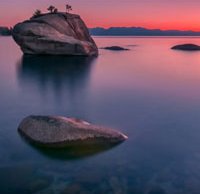4 focusing techniques for landscape photography: Where should you focus when shooting landscapes?
posted Friday, May 3, 2019 at 10:30 AM EDT

In some cases, it's obvious where and how you should focus for a photograph. For example, if you're capturing a portrait, you can't go wrong with the eyes. However, if you are capturing a shot of a vast landscape, it's not always clear where in the scene you should focus. If you have both foreground and background elements you wish to have sharp in your image, what should you do? In the video below, photographer Attilio Ruffo discusses four different focusing techniques you can use for landscape photography.
A common technique involves utilizing the hyperfocal distance of your lens. You can read more about it here, but the general idea is that given a focal length and aperture, if you focus your lens at a certain distance, you will be able to maximize the area of acceptable sharpness in an image. The catch here is the idea of something being "acceptably sharp." What one photographer considers sharp enough, another photographer may not. Something may be acceptably sharp for a small print but appear soft when printed large.
An alternate technique, focus stacking, will produce a final image with much better sharpness than hyperfocal distance. Focus stacking involves capturing multiple images with different points of focus and then combining them through the use of software. For example, the first image in the stack may focus on a near subject, then you will focus further away in successive shots until you have an image shot at infinity. Through the use of dedicated focus stacking software or manually stacking the images and using layer masks in Photoshop, you will show only the sharpest parts of each image in the final composite. There are downsides to this technique, however, including the need for a tripod, shooting more in the field and having to do additional work on the computer.
To see the other two focusing techniques, including Ruffo's favorite technique to use when out shooting, watch the full video below. If calculating hyperfocal distance or doing focus stacking sounds too complicated, you'll like Ruffo's solution to the focusing problem.
(Via Attilio Ruffo)